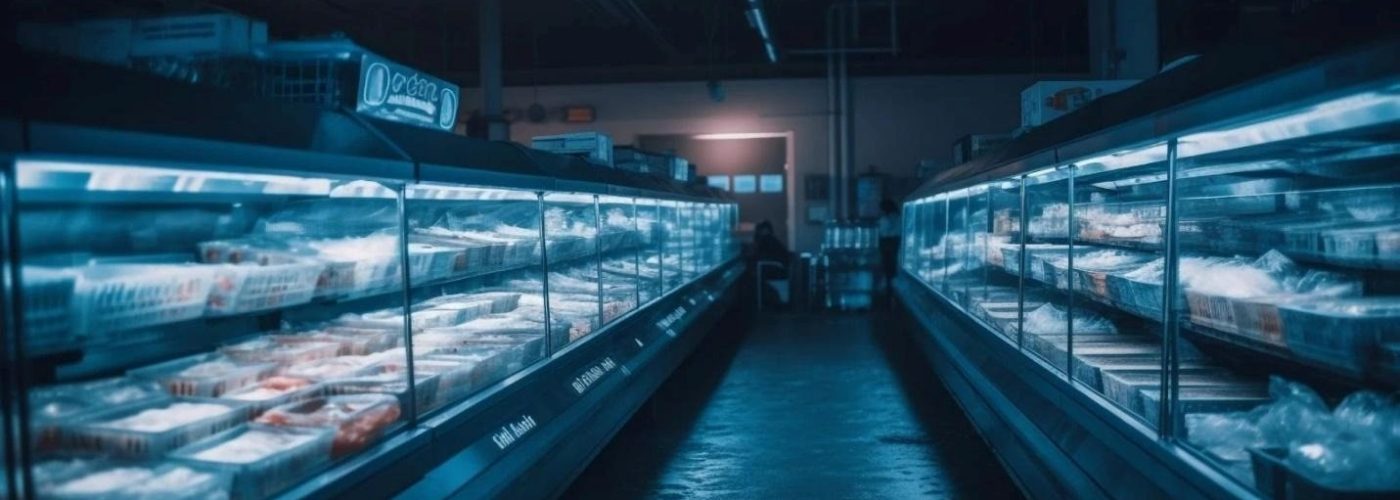When you hear “cold storage,” what’s the first image that pops into your head? Maybe it’s just big freezers packed with frozen foods, or those super-special cool rooms holding sensitive medicines before they get sent out. And while that’s certainly true, it barely scratches the surface of how monumentally important cold storage has become in today’s industrial world. You might be surprised to learn that these aren’t just specialized warehouses anymore; they’re rapidly turning into the absolutely indispensable backbone of modern manufacturing, supporting an incredible range of industries. We’re talking critical infrastructure that helps production happen. The very nature of cold storage properties has evolved dramatically. Early in my career, I’ll admit, cold storage often felt like just another unavoidable line item, an expense we had to swallow. Now? I see it as the nervous system of intricate production lines, a truly critical piece that enables precision and drives innovation.
This isn’t simply about keeping things cold; it’s fundamentally about protecting the integrity of materials, making complex processes possible, and shielding the supply chain from all sorts of troubles. Manufacturers today are staring down unprecedented demands for quality, for highly specific products, and for operations that can weather any storm. This constantly shifting landscape has pushed advanced cold storage solutions right into a central, strategic spotlight. It’s no longer just a utility; it’s a vital partner in reaching operational excellence and keeping that crucial competitive edge.
Beyond the Freezer Aisle: Redefining Cold Storage in Manufacturing
More Than Just Food: Diverse Applications
Our usual picture of cold storage normally limits its role to just keeping perishable foods fresh. But when you step into modern manufacturing, the reality is far more expansive. So many sophisticated processes and high-tech products demand incredibly precise temperature control to keep them effective and structurally sound. Let’s think beyond the supermarket: we’re talking about sensitive electronic components, industrial chemicals that simply break down if they’re not kept cool, specialized automotive composites needing exact curing temperatures, biological reagents used in advanced materials, and even tailored building materials whose properties are entirely temperature-dependent. Each of these requires an environment that’s meticulously controlled to prevent degradation, maintain crucial specifications, and extend the valuable shelf life of costly raw materials. I remember working with a client who made advanced aerospace components. Initially, they only thought about cold storage for their food-grade lubricants. But then they realized their high-performance resins, which were absolutely critical to the final product’s strength, were having premature curing issues due to ambient warehouse temperatures. Once they integrated dedicated cold storage, it literally transformed their reject rates and significantly improved product consistency. It proved to all of us that ‘cold’ isn’t just for perishables anymore.
From Niche to Necessity: An Evolving Mindset
This wider application has really driven a huge shift in how manufacturers think about cold storage. What was once brushed off as a necessary but burdensome overhead cost is now, more and more, understood as a powerful strategic asset – a genuine competitive advantage critical for ensuring quality and maintaining product integrity. The global marketplace is constantly pushing for higher quality standards, more custom products, and faster delivery times. These market forces absolutely demand a manufacturing setup where material stability and process precision are paramount, actively accelerating the move toward greater operational efficiency. I’ve personally seen this mindset change countless times, and it invariably drives profound improvements, turning companies from those simply reacting to problems into ones proactively optimizing their entire supply chain, with advanced temperature-controlled environments serving as a core enabler.
The “Backbone” Unpacked: Core Functions and Strategic Value
Ensuring Product Integrity and Quality Control
At its very heart, modern manufacturing deeply relies on consistency and precision. Cold storage is truly paramount here, directly maintaining the quality and effectiveness of raw materials, anything that’s “work in progress,” and even finished goods. It prevents spoilage, stops chemical degradation, or blocks unwanted reactions that could completely compromise the final product. But it’s not just about being ‘cold’; it’s about crafting those ideal, perfectly controlled conditions. Precise temperature and, often, humidity control are absolutely crucial, especially for sensitive components. Take, for a real-world example, a batch of specialized epoxy resins destined for an automotive application: a temperature excursion even a few degrees too high can kick off premature curing, making the material completely unusable. I once observed a manufacturer wrestling with persistent issues regarding the viscosity of a critical chemical precursor; once they simply integrated dedicated cold storage for just this one component, it entirely resolved a quality control nightmare that had plagued them for months, ultimately saving them hundreds of thousands in wasted product. This meticulous control is fundamental to quality assurance and genuinely helps extend the shelf life of expensive inputs, ensuring regulatory compliance and safeguarding against product failure.
Optimized Inventory Management and Just-In-Time (JIT) Production
The smart integration of cold storage solutions also enables truly superior inventory optimization and serves as a powerful ally for lean manufacturing and Just-in-Time (JIT) principles. By guaranteeing the stability and usability of temperature-sensitive materials, manufacturers can keep less inventory on hand, significantly cutting down on waste and all those associated holding costs. Strategic placement of cold storage facilities—whether they’re integrated right into a factory floor or located conveniently near distribution hubs—minimizes transit times and operational expenses. In turn, this allows for a far more fluid and efficient movement of materials within the entire supply chain. I recall working with a company that, by strategically decentralizing their cold storage closer to their assembly lines, managed to slash their raw material lead times by nearly $30%$. This shift didn’t just streamline production; it also dramatically improved their cash flow by reducing the capital tied up in inventory.
Supply Chain Resilience and Risk Mitigation
In today’s increasingly unpredictable global environment, having a robust supply chain that can bounce back is absolutely non-negotiable. Cold storage plays a genuinely critical role in cushioning against disruptions, ensuring continuous production, and minimizing financial losses from unforeseen events. From natural disasters to geopolitical instability, unexpected events can completely paralyze supply chains. A well-designed, diversified cold storage network acts just like an insurance policy, safeguarding critical components and finished goods. It allows sensitive materials to be kept securely as a buffer stock, significantly mitigating the impact of sudden shortages or transport delays. Imagine a scenario where a critical component for high-tech manufacturing, which simply must have strict temperature parameters, gets delayed because a port closes. Having secure, accessible cold storage facilities closer to the production site can easily mean the difference between minor delays and a complete shutdown. This really underscores its essential role in business continuity and overall risk management strategies.
Innovations in Cold Storage: Technology Driving the Transformation
Automation and Robotics
The efficiency and sheer reliability of cold storage facilities are being absolutely revolutionized by advancements in automation and robotics. Think about it: Automated Storage and Retrieval Systems (AS/RS), robotics, and Automated Guided Vehicles (AGVs) are perfectly suited for controlled, often incredibly extreme, cold environments. These technologies boost efficiency by rapidly moving goods, cut down on labor costs by minimizing the need for humans to work in uncomfortable conditions, and significantly improve safety by keeping personnel out of hazardous cold zones. What’s more, they enable high-density storage, maximizing that valuable cold space. I’ve personally seen these sophisticated systems pay for themselves within just a few short years by drastically improving throughput, reducing picking errors to almost zero, and accelerating order fulfillment rates, particularly for high-volume or high-value temperature-sensitive items. The precision and speed they offer are simply unmatched by manual processes.
IoT, Sensors, and Data Analytics
The seamless integration of Internet of Things (IoT) devices, advanced sensors, and big data analytics is transforming cold storage into an intelligent, genuinely proactive system. These technologies offer real-time monitoring of temperature, humidity, and other critical environmental parameters, generating an absolute wealth of data. This data is then rigorously analyzed to offer predictive insights into equipment performance, potential temperature excursions, and even the most optimal energy usage. The proactive insights gained are invaluable, allowing for intervention before issues even arise. For example, I distinctly recall a time when predictive analytics, fed by IoT sensors, flagged a subtle but consistent temperature fluctuation in a refrigeration unit that hinted at an impending mechanical failure. Our client was able to schedule maintenance before it became a full-blown crisis, preventing a costly loss of high-value product. This data-driven approach truly moves cold chain management from merely reacting to problems to actively predicting and preventing them, ensuring product integrity and optimizing operational efficiency.
Sustainable Cold Chain Solutions
In an era where environmental consciousness is growing by the day, sustainability has become a key driver in cold storage innovation. The industry is rapidly embracing eco-friendly refrigerants, designing incredibly energy-efficient facilities, and integrating renewable energy sources. Smart climate control systems dynamically adjust energy consumption based on real-time needs, leading to a significant reduction in the carbon footprint. Furthermore, advanced insulation materials and optimized airflow management actively contribute to substantial energy savings. I’ve consistently guided companies not just to adopt more sustainable cold storage practices, but to truly recognize the often-overlooked financial benefits. These initiatives position sustainability not merely as a compliance burden, but as a powerful brand differentiator and a clear source of significant long-term operational cost savings. For instance, optimizing refrigeration cycles based on energy prices or integrating solar panels can lead to substantial reductions in utility bills, showcasing that desirable win-win for both the planet and the profit margin.
Real-World Impact: How Manufacturers Are Leveraging Cold Storage for Success
Case Study: Advanced Materials Manufacturing
Let’s look at a company specializing in advanced composites for the aerospace industry. Their proprietary carbon fiber prepregs—essentially sheets impregnated with resin—are amazingly lightweight and strong. But here’s the kicker: they absolutely must be stored at precise freezer temperatures, often $-18^\circ C$ or colder, to prevent the resin from prematurely curing. Without rigorous cold storage, the material degrades, losing its structural integrity and instantly becoming useless for critical flight components. This manufacturer constantly wrestled with material waste and inconsistent product performance due to temperature fluctuations during storage and transport. By investing in an integrated, automated cold storage facility, complete with real-time IoT monitoring and strict climate controls, they not only drastically cut their material scrap rates by $15%$ but also extended the usable life of their prepregs by an incredible $30%$. What did this mean? Less waste, more reliable parts, and the ability to develop even more sophisticated new products, truly securing their competitive edge in a notoriously demanding sector.
Conclusion: Embracing the Cold Advantage
It’s truly clear that cold storage facilities have fundamentally shifted from being mere specialized compartments into the absolutely indispensable backbone of modern manufacturing. They are no longer a peripheral concern, but a critical, strategic investment that actively drives quality, efficiency, resilience, and innovation across a vast spectrum of industries. From safeguarding delicate aerospace composites to ensuring the efficacy of life-saving biologics, the ability to precisely control environmental conditions is now interwoven into the very fabric of industrial success. And the ongoing innovations in automation, IoT, and sustainable practices are only deepening this reliance, pushing cold storage even further into the strategic forefront.
For any manufacturer hoping to not just survive, but truly thrive in a landscape defined by advanced materials, strict quality standards, and dynamic supply chains, understanding and proactively investing in sophisticated cold storage is paramount. Delaying this recognition isn’t merely missing an opportunity; it’s frankly neglecting a fundamental component for survival and growth. My concluding thought often circles back to this: embracing this vital shift isn’t just good practice; it’s essential for achieving operational excellence, securing a competitive edge, and genuinely future-proofing your business in the complex, interconnected world I see every single day.





